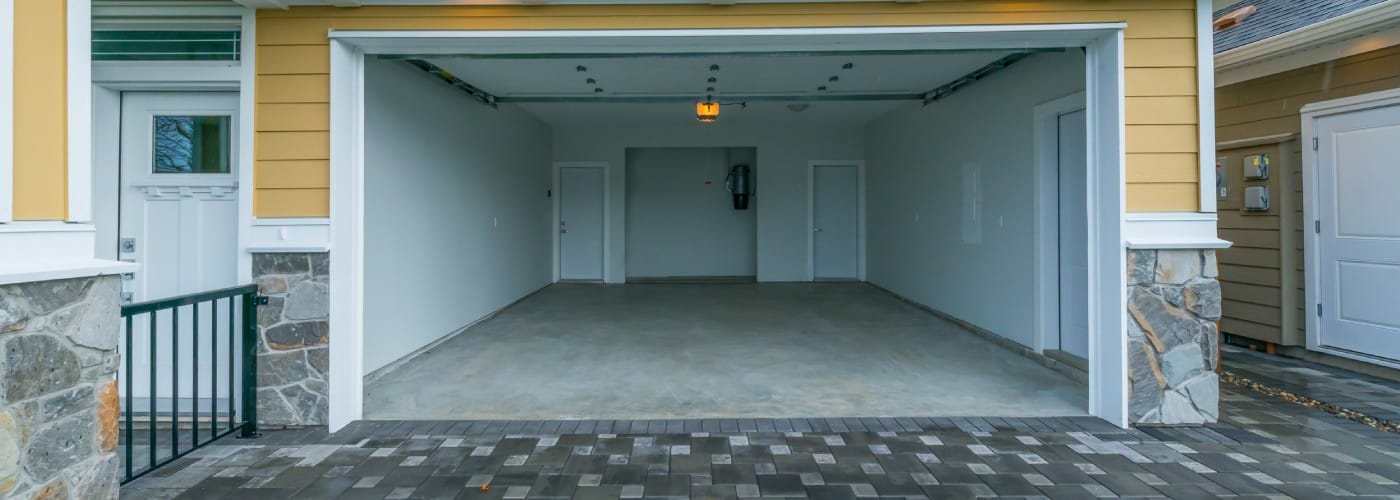The instructions below from American Veteran Garage will guide you through the general principles of overhead garage door installation. Be sure to follow all of the manufacturer’s instructions implicitly. And be sure to not hesitate to call a trained garage repair technician or an expert garage remodel technician if you have any problems.
Required Tools for the installation of an overhead garage door are Cordless drill, Socket/ratchet set, 4-in-1 screwdriver, Adjustable wrench, Locking pliers, Level, Stepladder, Rags, Safety glasses, and Sawhorses.
Follow the below steps in the installation of an overhead garage door:
Ø Go through your panels, the panels are usually labeled or numbered usually on the edges so that you know where they really go in. If they are not labeled, it’s important to check, the bottom one usually has a track that the weather strip will go into, all panels will have a rubber gasket on the top. The gasket will help in indicating which panel will be at the top. But generally looking at them and reading the instruction book that comes with the panel will help you know the different types of panels.
Ø Make sure the panels are in a certain order. The top one that you will work on first should be at the very bottom. Then there will be a chronological order as they stack up on the wall.
Ø Make sure you have all your parts: a bracket, roller, hinges. The panel has galvanized strips on the edge that has pre-punched holes in it. The holes are for putting the type of hardware that you will use.
Ø Get your hardware aligned to the pre-punched holes, don’t over tighten the hardware.
Ø Take the hinge, identify the holes you need and then mount the bracket, make sure not to over tighten the hinge bracket. To the exact same thing to the other edges of the door. Make sure you refer to the manufacturer’s instructions when installing the hinges and the brackets.
Ø Most cases you will find some intermediate hinges depending on the type of door, you can put the intermediate hinges until you have all the panels stacked up.
Ø Your garage door opening should be framed and finished for the installation of the door. The basic framing of the door should be standard. You will have a header, a couple of cripple studs on each side and another stud going up right in the header. For the overhead door you should have a nice surface to work with a 2/6 on the flat from the floor all the way to the ceiling one on both sides. Across the top of the door, you will have another 2/6 that runs across the header. At the center of the header you will need a block of wood, for mounting hardware.
Ø When you are planning to frame your opening, if you want a 10/8 foot door, your actual finished opening should be 10 feet wide and 8 feet high. Whatever your door size, that’s your opening size.
Ø Take the panel and set in the opening remember to put the rollers in it. The rollers are usually the standard size.
Ø Move the door right up against the strips that are on the opening. Double check that the panel is unbiasedly centered placed in the opening.
Ø Take a standard 3 inch nail and nail it onto the wood on the door. Bend the nail so that it’s able to hold the panel. Do this on both ends to hold onto the panel. Do this to all the panels.
Ø Check the door is on the sitting level.
Ø Go to the next panel and put hinges on it. The two subsequent panels only need the two hinges at the top. Make sure they are oriented right according to the manufacturer’s instructions.
Ø Take the second panel and set it on top of the first panel carefully.
Ø Get the panels aligned up perfectly.
Ø Use the 3-inch nails again to hold the panel in place. The edges of the door fit together so the bottom part will fit in perfectly. You will use the 3-inch nail on the top part of the panel.
Ø Screw the other hinges on the second panel.
Ø Continue with the process until you remain with the last panel.
Ø The last panel has a different bracket, with an adjustable sliding piece. Important to refer to the instruction manual when fitting the last panel.
Ø Mount the hinges on the ends of the panel. NB: if you are using a wider door, most manufacturers will have a reinforcing strip or a bracket that will go across the top of the door, to give the door a little extra strength.
Ø Put the upper panel in place. Put the top, bottom center hinges on the door panels.
Ø Measure to find the center of the door and align up the joint and the hinges with the center of the door. Fix the center hinges on the panels.
Ø The next step is to get the side rails on. You will have a vertical rail, the brackets and the bolts will be in the bag. You will have to semi-attached the brackets and the bolts before starting to install the vertical rail.
Ø Make sure you have all the rollers on the door. Position the track so that the flat side is towards the wall. The brackets will then be mounted on. Create a little space for the track.
Ø Insert the log bolt on the bracket, at the center of the slotted hole in the bracket and then fasten it in there.
Ø Attach all the brackets to the rails from the bottom bracket to the top bracket. Refer to the instruction manual for guidance.
Ø Attach the upper angle arm that has the bearing bracket on it. Attach it to the wall straight in line with the rail that has been attached already.
Ø Now you can set the upper curve bracket.
Ø Take one of the bolts in the instruction manual, and using the bolt, attach the hockey stick like metal to the rollers.

